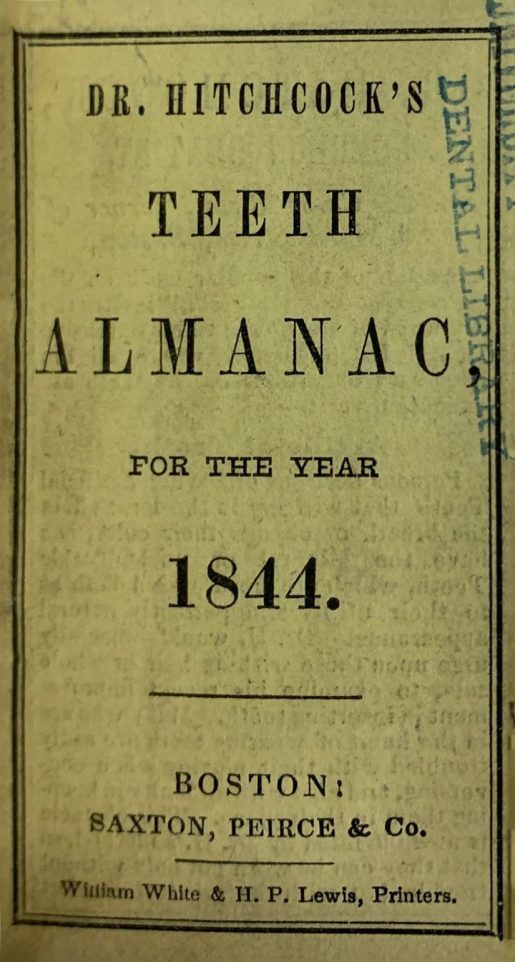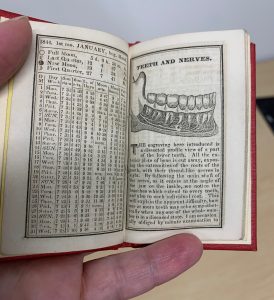 Today, the almanac is no longer the important and popular resource it once was in most households. It appeared in America at the end of the 17th century and its popularity was second only to the Bible. Almanacs offered lists of current events, advice, and weather prognostics tailored to a specific audience, such as that of the Farmer’s Almanac, and served as a basic home reference, especially for those in isolated households, helping to keep track of passing time. Dr. David Keyes Hitchcock started publishing almanacs annually around 1839, which happened years before printed calendars were invented (1870), and before there were any standards (1883)* by which to set clocks and watches.
Today, the almanac is no longer the important and popular resource it once was in most households. It appeared in America at the end of the 17th century and its popularity was second only to the Bible. Almanacs offered lists of current events, advice, and weather prognostics tailored to a specific audience, such as that of the Farmer’s Almanac, and served as a basic home reference, especially for those in isolated households, helping to keep track of passing time. Dr. David Keyes Hitchcock started publishing almanacs annually around 1839, which happened years before printed calendars were invented (1870), and before there were any standards (1883)* by which to set clocks and watches.
Dr. Hitchcock (1813-1895) was a surgeon dentist with a practice in Boston at 98 Court Street. He was the author of Preservation of the Teeth: A Family Guide, published in Boston in 1840. Falk Library has Dr. Hitchcock’s teeth almanacs for the years 1843 and 1844. The first of his dental almanacs includes standard pages with an astronomical calendar and advice on the maintenance of teeth, brushing, filling cavities, considering artificial teeth as a replacement for lost ones, and determining the right time and motives for tooth extraction. Commercial success led him to publish a new almanac in 1844, where he continued to educate the public on teeth-related matters. He updated the calendar pages and added new information on teeth and nerves and on the anatomical structure of a tooth and its growth, explained the etiology of a toothache and its treatment, and described customs from more primitive nations related to teeth. In order to advertise his practice, he also included an evaluation of his establishment together with a list of references made up of prominent Bostonians and his professional colleagues. This miniature book (a magnifying glass is recommended in order to read it) is the smallest item in our library.
*Local trivia: The University of Pittsburgh’s Allegheny Observatory played a role in the origins of the modern standard time system. Its first director, Samuel Pierpont Langley, devised a precise time standard including time zones known as the Allegheny Time System and distributed time signals via telegraph to all railroads in the U.S. and Canada, contributing to the history of timekeeping.
Please send inquiries to the History of Medicine.
~Gosia Fort

